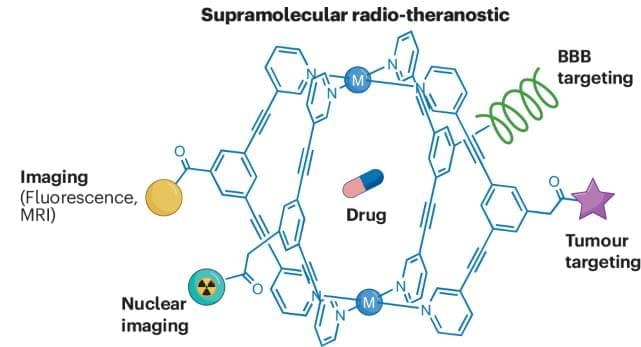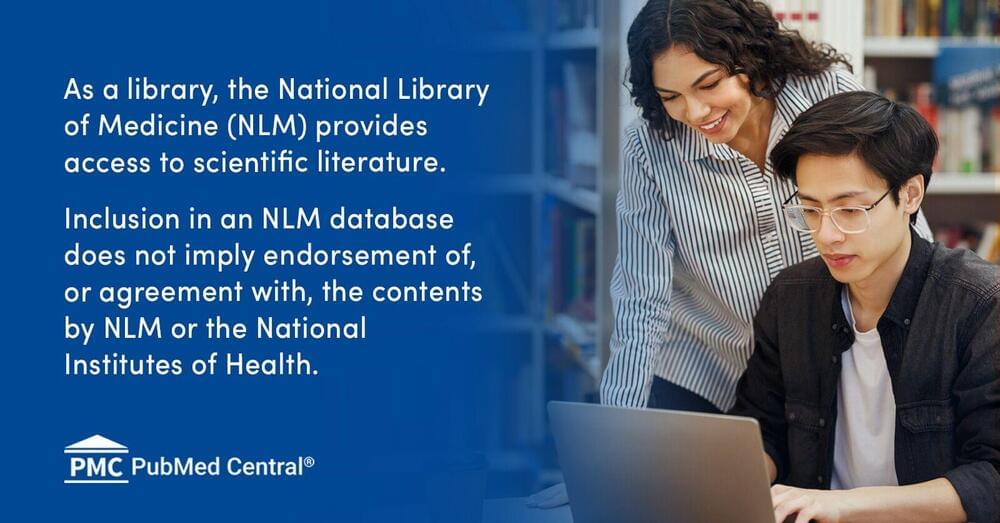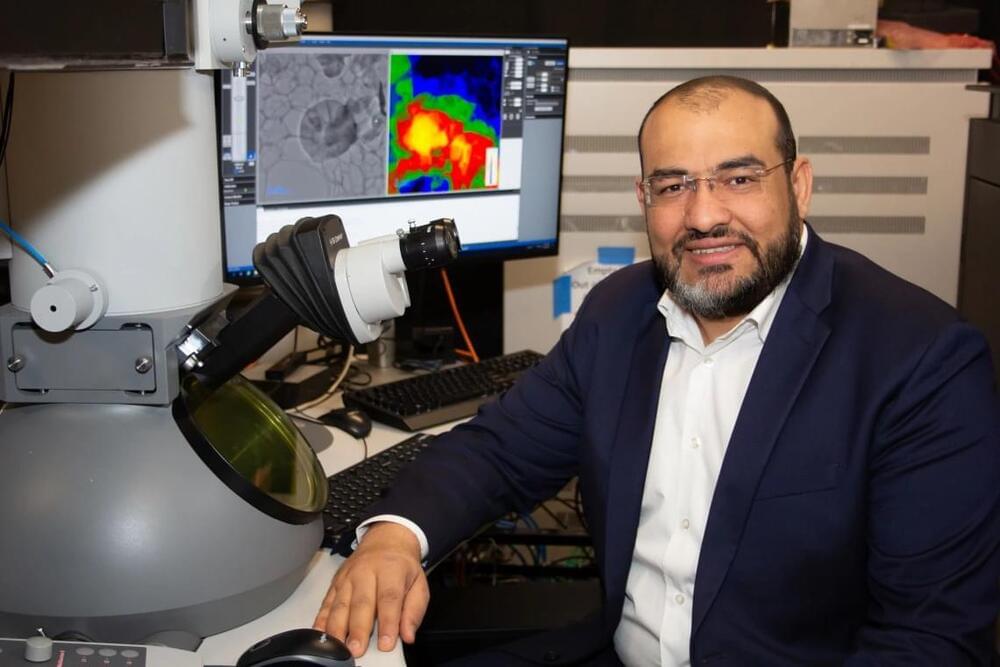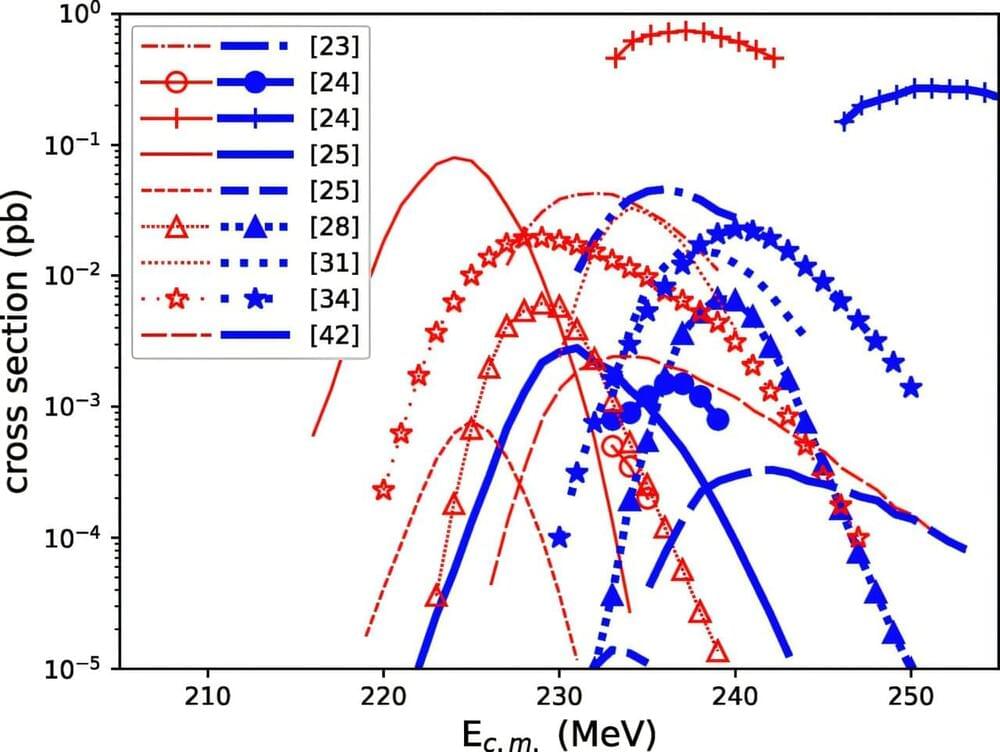Archive for the ‘chemistry’ category: Page 16
Oct 29, 2024
Modified metal-organic framework can capture benzene in the atmosphere to tackle a major health risk
Posted by Shubham Ghosh Roy in categories: chemistry, health
Scientists have developed a new material capable of capturing the harmful chemical benzene from the polluted air, offering a potential solution for tackling a major health and environmental risk.
Oct 29, 2024
Nuclear Rockets could Travel to Mars in Half the Time, but designing the Reactors that would Power them isn’t
Posted by Natalie Chan in categories: chemistry, nuclear energy, particle physics, space travel
NASA plans to send crewed missions to Mars over the next decade—but the 140 million-mile (225 million-kilometer) journey to the red planet could take several months to years round trip.
This relatively long transit time is a result of the use of traditional chemical rocket fuel. An alternative technology to the chemically propelled rockets the agency develops now is called nuclear thermal propulsion, which uses nuclear fission and could one day power a rocket that makes the trip in just half the time.
Nuclear fission involves harvesting the incredible amount of energy released when an atom is split by a neutron. This reaction is known as a fission reaction. Fission technology is well established in power generation and nuclear-powered submarines, and its application to drive or power a rocket could one day give NASA a faster, more powerful alternative to chemically driven rockets.
Oct 29, 2024
Assembling a new generation of radiopharmaceuticals with supramolecular theranostics
Posted by Dan Breeden in categories: biotech/medical, chemistry
Supramolecular metal-based structures have immense potential for biomedical applications as multimodal theranostic platforms. This Review gives an overview of the design principles and synthetic strategies; it also highlights the achievements in the field of radiochemistry.
Oct 27, 2024
‘Brain dead’ man trapped in body heard debate about turning off his life support
Posted by The Neuro-Network in categories: biotech/medical, chemistry, neuroscience
In 2017, Jacob Haendel was living a normal life as a head chef in…
A paralysed man who had an extreme form of locked-in syndrome and heard a nurse say he was “brain dead” has become the first ever to recover after hearing medical professionals debating whether or not to switch off his life support.
In 2017, Jacob Haendel was living a normal life as a head chef in Boston, Massachusetts but in the space of a few weeks, his life was turned upside down after he was diagnosed with acute toxic progressive leukoencephalopathy, which progressed into locked-in syndrome and forced his body would slowly shut down. An extreme form of locked-in syndrome is a condition where a patient is aware but cannot move or communicate verbally due to complete paralysis and can be caused by brain trauma, infection or exposure to toxins.
Oct 27, 2024
Lengthening Telomeres To Rewind the Clock of Aging
Posted by Montie Adkins in categories: biotech/medical, chemistry, life extension, media & arts, neuroscience

https://www.youtube.com/watch?v=AnlS1ATi5qU
Haven’t heard from Bill Andrews in awhile.
BiOptimizers Magnesium Breakthrough 10% with code Modern10 https://bioptimizers.com/modern. This video brought to you by BiOptimizers.
Here we talk with Dr Bill Andrews all about telomeres, why they are on the critical path of aging and finding a way to lengthen them is required in an complete longevity solution.
Some links are affiliate links so we will earn a commission when they are used to purchase products.
Continue reading “Lengthening Telomeres To Rewind the Clock of Aging” »
Oct 27, 2024
Cannabidiol for musculoskeletal regenerative medicine
Posted by Chavis Srichan in categories: biotech/medical, chemistry, life extension
It is well-established that chronic MSK pain is the key factor for physical disability in the adult population. 19 The World Health Organization (WHO) estimates that 20–33% (over 1.71 billion individuals) of the global population suffers from chronic MSK pain. 20 This type of disorder is characterized by acute or chronic pain in MSK structures, which involve muscles, tendons, ligaments, bones, and nerves. 21 The most common conditions responsible for visits to a physician’s office are OA, rheumatoid arthritis, myofascial pain syndrome (MPS), and low back and neck pain. 22 Less common incidents are generally accompanying with injuries like of tendon sprains, ligament tears, muscle tears, fractures, and similar damage during sports. 20
If left untreated, these conditions progressively increase suffering, disability, and drug consumption, which subsequently diminish an individual’s quality of life. 23 This also translates to a main community health problem due to significant high expenses for health-care systems and insurance for disability. Advanced age may remain the top variable associated with the increased risk of musculoskeletal disorders (MSDs) and MSK pain; however, these conditions may still unfold at any given age for various reasons. Therefore, every individual is at risk of experiencing MSK pain throughout an entire lifetime. 24 Acute pain can become chronic due to numerous factors. The level of intensity, site, and time of noxious stimuli are dictated by the interplay between mechanical, chemical, and thermal receptors and immune cells. 25 Under standard conditions, noxious stimuli and painful sensations gradually decrease with the progression of healing.
Oct 26, 2024
Freeze-frame: U of A researchers develop microscope that can see electrons in motion
Posted by Omuterema Akhahenda in categories: bioengineering, chemistry, quantum physics
Imagine owning a camera so powerful it can take freeze-frame photographs of a moving electron – an object traveling so fast it could circle the Earth many times in a second. Researchers at the University of Arizona have developed the world’s fastest electron microscope that can do just that.
They believe their work will lead to groundbreaking advancements in physics, chemistry, bioengineering, materials sciences and more.
“When you get the latest version of a smartphone, it comes with a better camera,” said Mohammed Hassan, associate professor of physics and optical sciences. “This transmission electron microscope is like a very powerful camera in the latest version of smartphones; it allows us to take pictures of things we were not able to see before – like electrons. With this microscope, we hope the scientific community can understand the quantum physics behind how an electron behaves and how an electron moves.”
Oct 26, 2024
Successful experiment paves the way for discovery of a new element
Posted by Saúl Morales Rodriguéz in categories: chemistry, physics
The search for new elements comes from the dream of finding a variant that is sufficiently stable to be long-lived and not prone to immediate decay. There is a theory in nuclear physics about an island of stability of superheavy elements. This is a potential zone in the upper part of the periodic table of as-yet-undiscovered elements that could remain stable for longer than just a few seconds. The aim is to explore the limits of stability of atomic nuclei.
Oct 26, 2024
Lithium Supply Crisis Averted: New Technology Doubles Extraction Efficiency
Posted by Saúl Morales Rodriguéz in categories: chemistry, sustainability
The demand for lithium, essential for powering sustainable technologies, is rising quickly, yet current methods leave up to 75% of the world’s lithium-rich saltwater sources inaccessible.
With some predicting global lithium supply could fall short of demand as early as 2025, the innovative technology – EDTA-aided loose nanofiltration (EALNF) – sets a new standard in lithium processing. The technology uniquely extracts both lithium and magnesium simultaneously, unlike traditional methods that treat magnesium salts as waste, making it smarter, faster and more sustainable.
The work, co-led by Dr Zhikao Li, from the Monash Suzhou Research Institute and the Department of Chemical and Biological Engineering, and Professor Xiwang Zhang from the University of Queensland, promises to meet the surging demand for lithium and paves the way for more sustainable and efficient extraction practices.
















